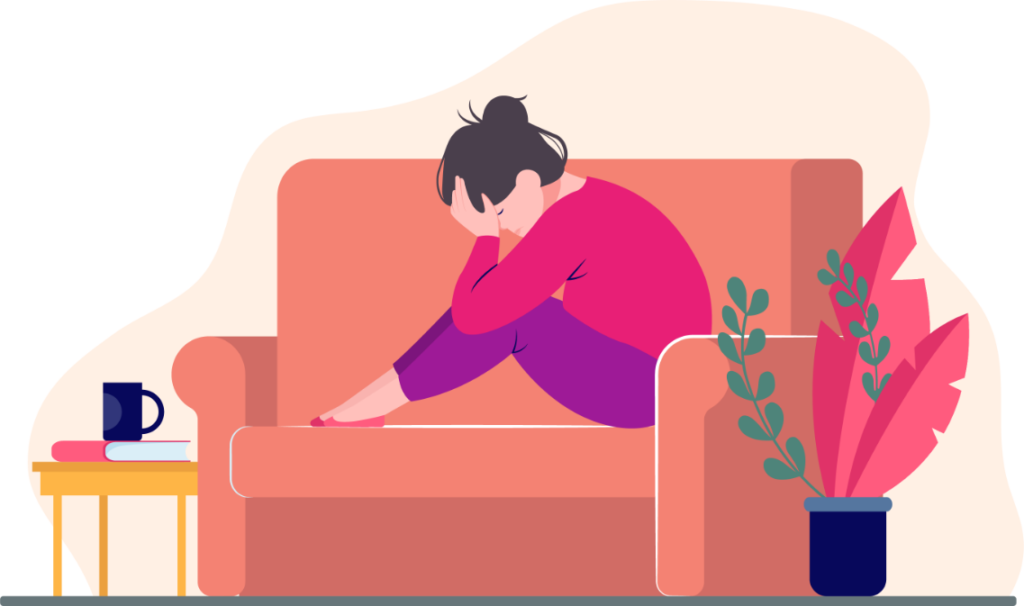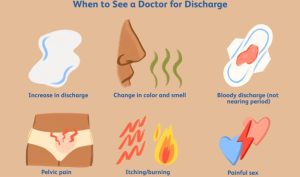Ever wondered how to ride the unpredictable tides of your menstrual cycle while maintaining your health and well-being?
Look no further! This blog is for you. Whether you’re a seasoned sailor of menstruation or just setting sail, we’ve got all the essential information you need to not only survive but thrive during your monthly voyage.
So, grab a cup of coffee and scroll down!

Understanding Your Menstrual Cycle
So, let’s dive into the nitty-gritty of your menstrual cycle! Understanding your cycle is key to navigating through the ups and downs of your period. First things first, your menstrual cycle is the monthly series of changes your body goes through in preparation for a potential pregnancy. On average, it lasts about 28 days, but don’t be alarmed if yours is shorter or longer – it’s normal!
The cycle has two main phases: the follicular phase and the luteal phase. During the follicular phase, your body prepares for ovulation by developing follicles in your ovaries. Then, around day 14, ovulation occurs – when an egg is released from the ovary. This is a prime time for conception. If the egg isn’t fertilized, it’ll break down and be shed along with the lining of your uterus, which leads to your period.
During the luteal phase, which begins after ovulation, the empty follicle turns into the corpus luteum, producing progesterone to thicken the uterine lining in case of pregnancy. If fertilization doesn’t occur, hormone levels drop, causing the uterine lining to shed and start a new cycle.
Remember, every woman’s menstrual cycle is unique, and it’s essential to embrace and understand your body’s natural rhythms.
Period Products and Their Pros and Cons
All right, let’s talk about period products and all the options out there! It’s incredible how far we’ve come from the days of bulky pads and uncomfortable tampons. Now, there are so many different choices to suit every preference and lifestyle.
First up, we have pads – the classic go-to for many women. They’re easy to use, widely available, and come in different sizes and absorbencies. Plus, they’re great for overnight use or on lighter-flow days. But, let’s be honest, they can feel a bit bulky and sometimes shift around, causing leaks.
Then we have tampons, the discreet little heroes that have saved many outfits from embarrassing stains. They’re small, easy to carry, and can give you that extra freedom during physical activities. But they can be a bit uncomfortable to insert, especially if you’re a beginner, and there’s always that risk of Toxic Shock Syndrome (TSS) if not used properly.
If you’re looking for an eco-friendlier option, menstrual cups are gaining popularity. Made of medical-grade silicone or latex, they’re reusable and can last for years. Plus, they can hold more fluid than tampons, so you can go longer without changing. But it does take some practice to get the hang of inserting and removing them, and some people find them less comfortable to wear.
Navigating Menstrual Irregularities
Okay, ladies, let’s get real for a moment. We all know that our menstrual cycles can be unpredictable. One month, everything is smooth sailing, and the next, it’s like a rollercoaster ride. But fear not, because we’re here to help you navigate those pesky menstrual irregularities like a pro!
First things first, let’s talk about irregular periods. It’s completely normal for your cycle to vary in length from time to time. Stress, changes in weight, hormonal imbalances, and certain medications can all throw your cycle off track. But if you notice a significant change in your menstrual pattern, such as consistently irregular or missed periods, it’s always a good idea to check in with your doctor to rule out any underlying health issues.
Next up, let’s tackle heavy periods. You know the ones – the ones that feel like a crime scene in your pants. If you’re soaking through super-absorbent pads or tampons in less than two hours, experiencing intense cramping, or passing large blood clots, it’s time to have a chat with your doctor.
Heavy periods can be a sign of conditions like fibroids, polyps, or hormonal imbalances that may require medical intervention. Ignoring heavy periods can lead to anemia and decreased quality of life, so don’t hesitate to seek help.
On the other hand, light periods or spotting can also be concerning. If you consistently have periods that only last a day or two, it could be a sign of hormonal imbalances or even early menopause. Again, consulting with your doctor is the best way to get to the bottom of these issues.
And let’s not forget about the dreaded period symptoms – the bloating, cramps, mood swings, and cravings. While these are often considered a normal part of menstruation, they can sometimes be excessive and disruptive to your daily life. Thankfully, there are various remedies, both medical and natural, that can provide relief. Continue reading to get to know!
Natural Remedies for Menstrual Cramps
Ah, menstrual cramps – the dreaded part of our monthly visitor. It’s like our uterus is playing a cruel game of Twister, and we’re the unwilling participants. But fear not, my fellow cramp sufferers, because some natural remedies might just make your period a little less painful.
First up, heat therapy. Grab a hot water bottle or heating pad and place it on your lower abdomen. The warmth can help relax those contracting muscles and provide some relief. If you’re on the go, a warm bath or shower can also do the trick.
Next, let’s talk about herbs. Chamomile tea has been known to ease menstrual cramps, thanks to its anti-inflammatory properties. You can also try ginger tea, which can help with nausea and inflammation. And if you’re feeling adventurous, some women swear by taking a teaspoon of fenugreek seeds soaked in water overnight – it might taste a bit funky, but hey, if it works, it’s worth it!
Exercise can also be your best friend when it comes to cramps. I know, I know, the last thing you want to do when you’re doubled over in pain is move your body. But trust me, gentle exercises like walking, stretching, or even yoga can help increase blood flow and reduce muscle tension. Plus, the endorphins released during exercise can boost your mood – a win-win!
Another natural remedy for menstrual cramps is acupuncture. This ancient Chinese practice involves inserting thin needles into specific points on the body to restore balance and relieve pain. Many women have reported a significant reduction in cramps after receiving acupuncture treatments.
So, there you have it, my friends – a comprehensive guide to your menstrual health! We’ve covered everything from understanding your menstrual cycle to navigating through those pesky irregularities. We’ve talked about different period products and their pros and cons, as well as natural remedies for those dreaded cramps.
But the most important thing to take away from this guide is that your menstrual cycle is unique to you. Embrace and understand your body’s natural rhythms. Listen to your body, track your symptoms, and be your advocate for your menstrual health. And remember, it’s okay to ask for help and support. Whether it’s from your doctor, friends, or online communities, there are resources available to assist you on your menstrual health journey.
So go forth, my friends, armed with knowledge and empowered by your newfound understanding of your menstrual cycle. Embrace your periods, take care of your body, and let’s work together to make our periods happier and healthier. You’ve got this!







